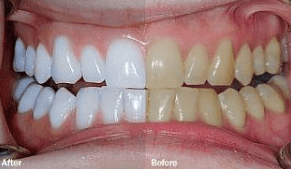I’m sure you’ve heard about all the hype around the most popular in-office whitening procedure done today. It’s called Zoom Whitening and the results our clients have achieved are absolutely staggering!
How Does Zoom Whitening really work?
Zoom Whitening is a supervised method of teeth whitening that uses a whitening gel placed on the teeth. The gel is then activated by a special light that whitens your teeth up to 8 shades whiter. Our clients also say their teeth shine and have a much more noticeable luster after having completed the Zoom procedure.
Is Zoom Whitening safe?
Absolutely! While other whitening products can harm the teeth and gums, Zoom Whitening actually works to give greater luster and protects enamel.
Can Teeth Whiteners Damage Enamel?
According to the American Dental Association (ADA), Zoom Whitening and then whitening products you buy from the dentists are both safe and effective. However, the ADA recommends a dental consultation before whitening in order to avoid exacerbating any existing problems with teeth and gums, or covering up tooth darkening that would help a dentist in finding potential problems.
Whitening agents can cause gum irritation and tooth sensitivity, all of which go away when treatments ends and can be relieved by over-the-counter pain relievers or topical numbing gels.
Can Whiteners Damage a Tooth’s Nerve?
It’s important to note that teeth whiteners do not damage a tooth’s nerve. However, if there’s already a pre-existing problem like infection or decay, the resultant sensitivity can me misdiagnosed as a symptom of temporary sensitivity which is common with whitening and supposed to go away. If it doesn’t, go back to your dentist to determine the cause of the sensitivity.
The Zoom Details
In case you’re interested in learning about the details, this is about exactly how Zoom whitening works:
Whitening gels are made from either hydrogen peroxide or carbamide peroxide and that reacts with moisture in the mouth and breaks down, or oxidizes, getting into the enamel of teeth where stains settle. Part of the oxidization is the peroxide, which acts to whiten, while urea, an acid that comes out during the reaction, acts to break apart some of the stain bonds, allowing the whitening to disperse.
Give Us A Call
For noticeably whiter teeth and the confidence that comes with a smile that shines, call me (905-338-6684) or email me and let’s set up an appointment.

